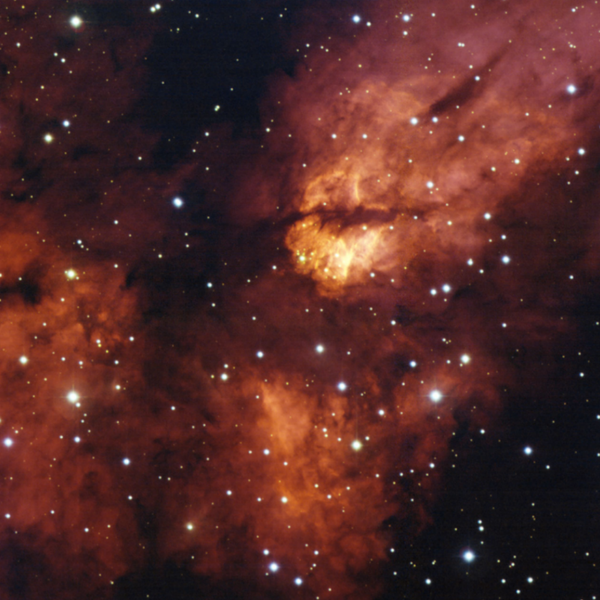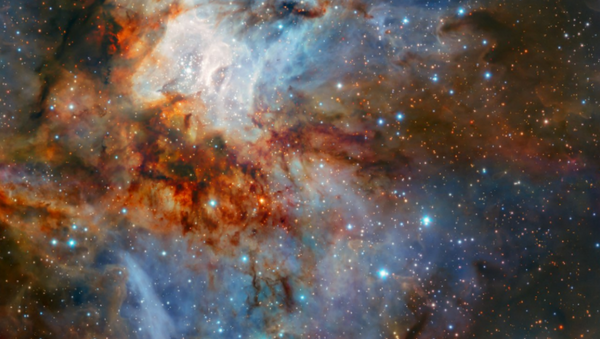The image was captured by the HAWK-I infrared imager that's mounted on ESO's Very Large Telescope in Chile, ESO revealed in a news release.

"The central area of RCW 38 is visible here as a bright, blue-tinted region, an area inhabited by numerous very young stars and protostars that are still in the process of forming," the release states. "The intense radiation pouring out from these newly born stars causes the surrounding gas to glow brightly."
"This is in stark contrast to the streams of cooler cosmic dust winding through the region, which glow gently in dark shades of red and orange. The contrast creates this spectacular scene — a piece of celestial artwork," the announcement adds.
The image last obtained of RCW 38 was taken in 2009 with the Wide Field Imager instrument with data collected through four different filters on the MPG/ESO 2.2-meter telescope in La Sille, Chile, according to the observatory.

The stark differences in images are due to the researchers' decision to take the 2018 image with an infrared imager instead of in optical wavelengths, as officials had done in 2009.
"Optical images appear emptier of stars due to dust and gas blocking our view of the cluster," researchers explained. "Observations in the infrared, however, allow us to peer through the dust that obscures the view in the optical and delve into the heart of this star cluster."
The image was taken as part of a series of test observations for the HAWK I and GRAAL, an adaptive optics module that aids HAWK I in capturing images.

